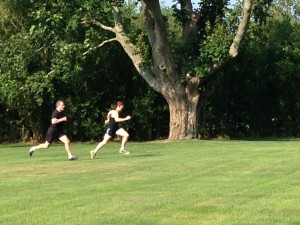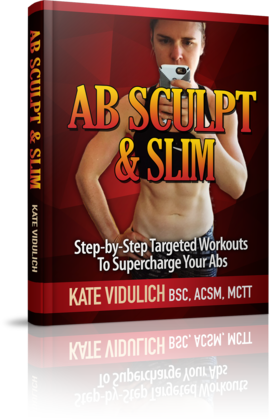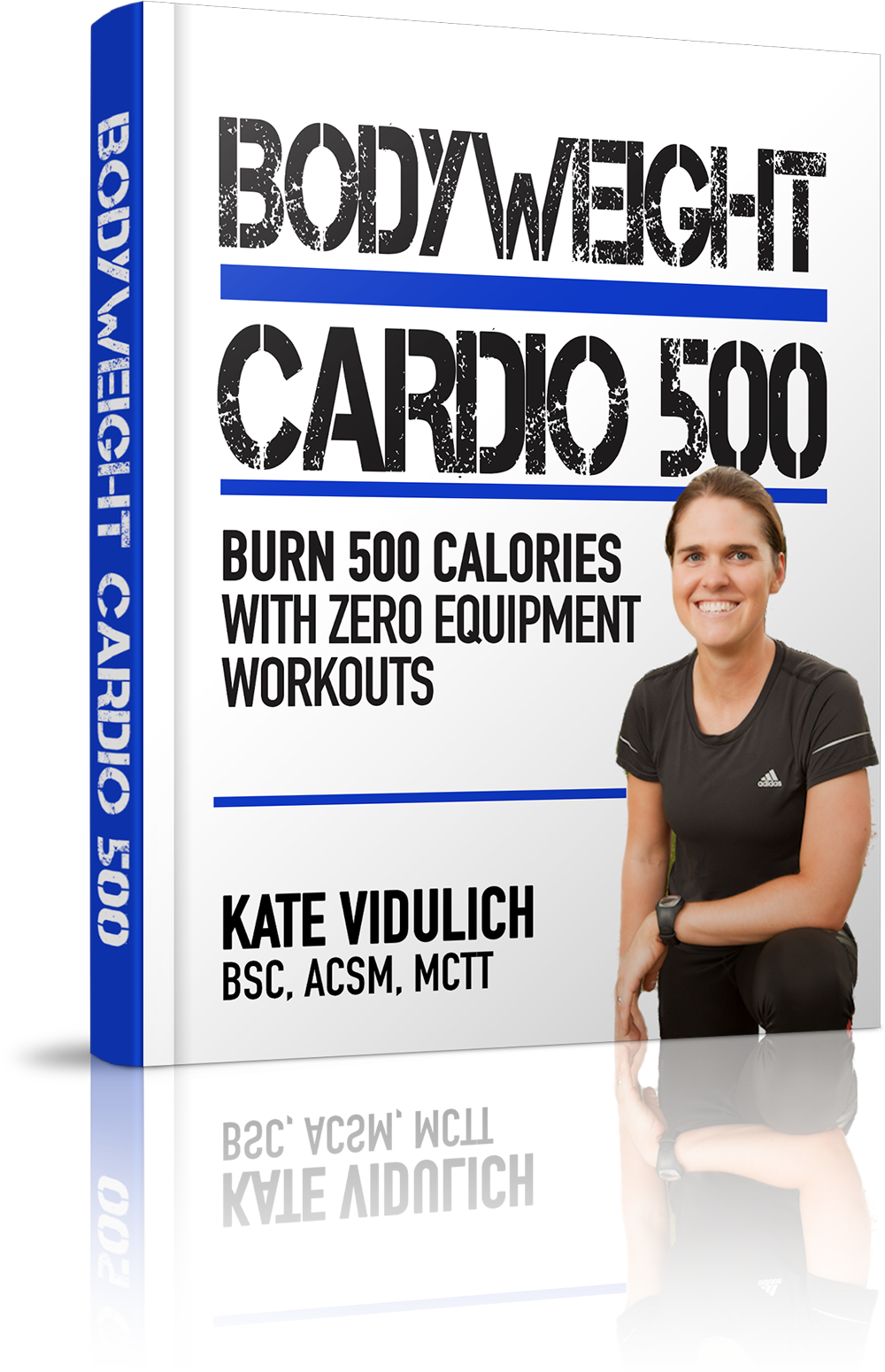You know High Intensity Interval Training (HIIT) rocks for fat loss.
But what’s the best type of interval training? There’s more options than just “30 seconds on, 30 seconds off” on the dreadmill for 20 minutes. I’m bored just thinking about that…
Over the years, I’ve tried and tested many different forms of interval training. My personal faves include outdoor sprints, metabolic resistance intervals and rowing sprints. And Versa Climber sprints… well, I love to hate them!
The Top 10 HIIT Workouts
Here is my list of preferred methods to do your intervals, ranked in order from worst to best, based on my own and client experiences…
10. Swimming (this only works for competent swimmers with great technique)
9. Elliptical and cross trainer
8. Treadmill Running
7. Rower sprints (again, you need good technique)
6. Spinning
5. Strongman movements (prowler sled pushes, tire flips, sledgehammer slams)
4. Stair climber
3. VersaClimber sprints (if you have this machine at your gym, get on it!)
2. Bodyweight HIIT workouts (also can use DBs)
1. Outdoor sprints (extra points for hitting the hills)

OK next question, how long should you do the intervals?
There is NO “ultimate” interval training program or protocol for fat loss. Studies have been conducted on a variety of approaches, and there have been great results. But there’s no best “sets or reps” .
That’s actually a good thing though, because it allows for variety in our approach to programming, and you can alter the interval times to train different energy systems.
In my opinion, the best interval is simply one you stick with, and change every 4 weeks as you would your strength training.
Recommendations for interval training protocols have ranged from 15 seconds (from old school stuff in the 90’s), up to 5 minutes (also known as aerobic intervals).
Let’s take a quick look at the different interval recommendations you can try:
8 seconds on, 12 seconds off
This was a landmark study, one that I’m proud to say I was involved in. Now considered the famous “intervals vs. cardio” study from 2007, Australian researchers used an 8 seconds sprint, 12 seconds rest interval for 20 minutes.
The results found that intervals helped subjects lose belly fat, but steady state cardio didn’t. Unfortunately, it is extremely difficult to replicate 8 seconds on, 12 seconds off using regular cardio equipment at your gym.
15 seconds
The awesome thing about 15 second intervals is that you’ll be able to work at a very high rate (almost near your maximal power output), as long as you get adequate recovery between work intervals.
The only problem is that again, it is very difficult to do 15 second intervals on regular cardio machines. It takes a long time to “speed up” and “slow down” the machine settings to the correct speed, it can become really annoying. So I would save this method for outdoor sprints.
Your rest interval should be at least 15 seconds long, and can be as long as 60 seconds. The longer you rest, the better your recovery and the harder you will be able to exercise in next interval.
If you want to try these short, high-intensity intervals, you should do so only if you already have an above average level of fitness. It’s not for beginners.
20 seconds on, 10 seconds off
This method is famously known as the Tabata protocol, after the Japanese scientist published a study in the 90’s. It is very demanding (uh der…), and every man and their dog swears by it these days. While some trainers have suggested this is the best method for interval training, there is NO solid proof that you will get better fat loss results.
Sure, you’ll get your interval workout done faster (provided you do the same number of intervals as any other workout). However, it’s near impossible to replicate the real intensity of the true Tabata protocol. You can read my rant here.
Only attempt the 20-10 intervals if you’re at an intermediate or advanced fitness level.
30 seconds
My Bodyweight HIIT Cardio workout routines tend to use a lot of 30 second work intervals. Beginners rest up to 90 seconds between intervals, while advanced fitness folks rest 30-60 seconds.
Obviously , a longer rest allows you to work harder in each successive interval. So you’ll almost be able to match your performance in the first interval with each following interval. Shorter rest intervals can lead to a dramatic drop-off in performance with each interval, but produce a greater afterburn effect.
I started using these intervals myself and with clients back in 2009, and I discovered they are totally awesome for fat loss.
45 seconds Intervals
These intervals are proven effective for many sports (such as hockey, soccer, basketball, and rugby), in addition to being beneficial for fat loss.
Not only do these intervals fatigue your muscles, but also they will test your mental toughness (of course if you go all out with the right intensity.) Use 45-90 seconds of recovery between intervals, and so 3-6 intervals per workout.
I have also tested this interval protocol – it produced excellent fat loss results and conditioning benefits. Basically, your fitness and fat loss will skyrocket.
60 second Intervals
This protocol is similar to the 45 second intervals in benefits and toughness. Aim for 60-120 seconds of recovery between each round.
120 second intervals
Now we’re officially getting into aerobic intervals, that can be used for both fat loss and improving aerobic capacity for running and other sports.
It’s simple: work for 2 minutes and then recover for 2 minutes. Repeat 6 times.
Obviously these workout take longer, but will help to improve your athletic performance and fat loss.
3, 4, or 5 minute aerobic intervals
A lot of strength-endurance studies have used this protocol, and also a lot of soccer-training protocols. Think same strategy as with the two minute intervals.
This really increases your workout time and is very sports specific. Only serious endurance athletes tend to use these longer intervals in their programming.
Beginner or Advanced?
If you are thinking these intervals all sound “too intense” and crazy for you, no dramas. Interval training is all relative to your current level.
In fact, a recent study found that coronary-heart disease patients found interval training EASIER than cardio!
Are you just starting out? You don’t have to sprint for your life in every type of interval.
Instead, just work at slightly harder pace than your normal. By the end of the interval, you should be feeling tired, but not totally gasping for air. Start conservatively and you will get the hang of it.
Here’s an idea: if you regularly walk on the treadmill at 3.5mph for 30 minutes continuously, you might try doing a couple of 1 minute intervals at 4.0mph. Give that a try for an interval workout and let me know how it goes.
My favorite intervals for fat loss are metabolic resistance intervals between 15-45 seconds. But again, I think you will get your best fat loss results if you vary your interval training workouts every 4 weeks – just like you must change your strength training program.
What’s your favorite type of interval workout? Let me know your favorites in the comments box below the post.
Have an awesome interval workout today!
Your Coach,
KV
PS. You can get my NEW 4 minute bodyweight Interval workouts 100% FREE:
==> Grab your FREE workouts here













8 Replies
I have my road bike on a trainer and I like doing intervals on that the best. No working up to speed required, just gun it right from the start! I used to bike race so I’m naturally biased. My other favorite has recently become the jump rope thanks to Shawna, or burpees as fast as you can without the pushup.
Hey Steph! Yes the jump rope totally ROCKS for intervals! It’s great to add in between sets in a strength session to boost the intensity. Keep on rocking it!
I do this when I deadlift or any powerlifting exercises. I love the intensity and it keeps my heart pumping and muscle in working mode. Takes too long to rest on strength sets. I feel like I’m cooling down while I’m resting.
My favourite type of intervals are 400m sprints on the rower for 3 or 4 sets.
For me personally, I find I work harder when I’m trying to equal or beat a certain time I’ve set rather than working to a timed set.
Nice one Jon! I love doing sprints on the rower too – it’s an awesome challenge!
I love sprints outside, or the bodyweight/DB intervals from TT… I did 50/20 today, but maybe I am not resting long enough for a 50 second work, after reading this!
I love your workouts and how clear you make things… and your accent!!
I been using the 20/10 intervals and I’ve had great results. My workout consist of 6 exercises, 8 sets per exercise using 20/10 intervals with 1 min rest between exercises. So I get 4 min of work with each exercise before my 1 min rest. I also change the exercises slightly each month so each month builds off the previous month. This is my bodyweight workout. I also do weight training but I love my bodyweight circuit. I love your site Coach Kate
gidday from QLD Aussie.
I’m a enhancer user of all types u mentioned but more often your favorite metabolic burn system. I’m a passionate body dynamics trainer massage injury therapist & wellness coach & former PE teacher. Being involved with this industry for 40yrs so @ 62 r still ripped & body toned, but need to avoid most impact style workouts because of past crazy sporting injuries. Thanks kindly Grant Wood